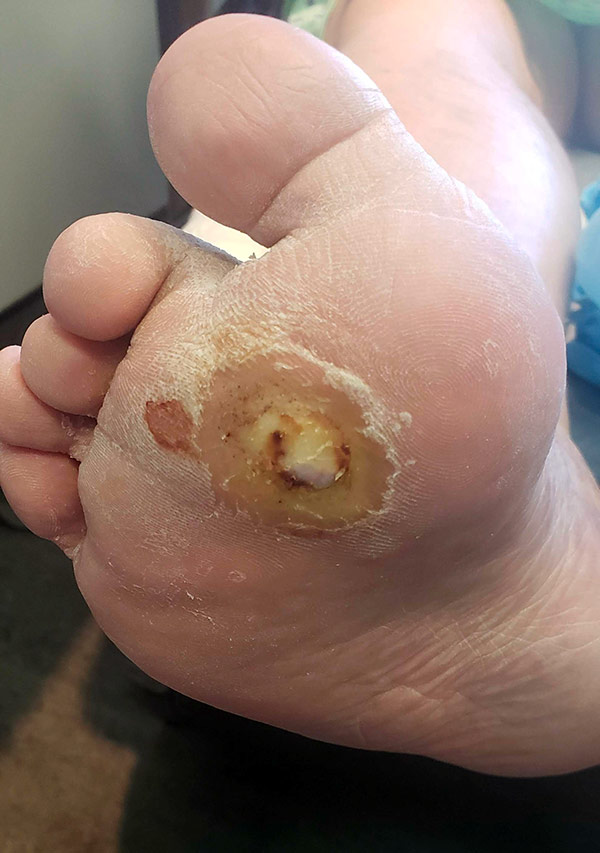The diabetic foot
What does it mean to have a diabetic foot and what are the causes?
For a person with diabetes, having a “diabetic foot” means that the nerves in their feet are damaged. This is because the nerve fibers that relay messages to the brain no longer function properly.
If you have diabetes, the site you are currently visiting is designed to help you prevent the complications arising from diabetic foot.
People with diabetes are at greater risk of developing a foot ulcer than non-diabetics. Why is this? Because over time, diabetes causes damage to the nerves and blood vessels. This damage occurs slowly, often without you realizing it.
How?
- Hyperglycemia, or high blood sugar, damages your nerves and blood vessels. Excess blood sugar causes plaque to build up and stick to the walls of the blood vessels that supply your nerves.
- Information signals between your foot and brain are not transmitted properly. For example, you may have a diminish sensation of pain or you may not feel anything at all. The same thing can happen with sensations of heat, cold or pressure. This is called “neuropathy“.

For example, someone who has normal sensations will have the reflex to immediately remove their foot if the water in the bath is too hot or if they step on a nail. Similarly, they will stop wearing shoes that hurt their feet. In person with diabetes, these sensations diminish or disappear, increasing the risk of developing sores and infections. In severe cases, these wounds can lead to amputation, especially if there is an infection and poor blood circulation.
Video: What is the diabetic foot?
What is the diabetic foot triad?
You have probably heard of the diabetic foot triad. “Triad” means “three.” Diabetic foot problems are typically associated with the presence of three conditions.
The three conditions of the diabetic foot triad are:
- Polyneuropathy, which indicates that your nerves are affected in several ways;
- sensory neuropathy;
- autonomic neuropathy;
- motor neuropathy.
- Ischemia, which means that your blood circulation is poor, restricting blood flow in your foot;
- Infection, which means that bacteria or germs have entered your system.
Polyneuropathy
“Neuropathy” means that the nerves are damaged. This interferes with the flow of messages from the nerves to the brain. “Poly” means “many”, so "polyneuropathy" means that the nerves are affected in several ways. People with diabetes experience three basic types of neuropathy. Learning how these different types of neuropathy affect you will help you better understand the measures we recommend to prevent them later on.

Sensory neuropathy
Sensory neuropathy affects the sensory nerves, causing a decrease or absence of sensations of pain, temperature or touch. Sensations may disappear altogether or they may still be present but altered. People with sensory neuropathy may experience a tingling sensation, pins and needles, electric shocks and sometimes pain. These sensations are caused by a scrambled or damaged signal between the nerves in the foot and the brain.
Autonomic neuropathy

Autonomic neuropathy refers to damage to the “autonomic” nerves, so called because they are in charge of the involuntary or natural bodily functions. Sweating, for example, is produced by the sweat glands. When these glands malfunction, the foot sweats too little or not at all. This lack or absence of sweat causes:
- dry skin on the feet;
- the appearance of corns, callouses and cracks.
Motor neuropathy
Motor neuropathy affects the nerves that control muscles in the foot and causes the foot to become deformed. There is a loss of muscle function that can cause atrophy of the foot. The imbalance between nerve signals, movement and foot strength results in deformities such as bunions, hammertoes, claw toes and flat feet. These deformities prevent the foot from landing properly on the ground, leading certain parts of the foot to become more prominent and subject to injury at areas where pressure is applied to the foot. Because people with diabetes tend to have little or no feeling in their feet, they are more likely to develop wounds.